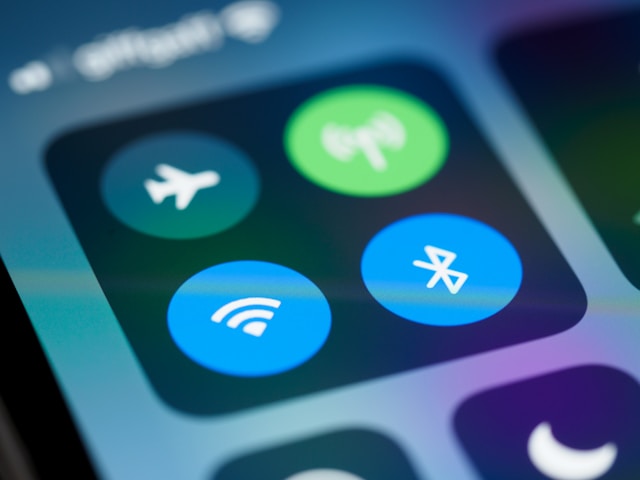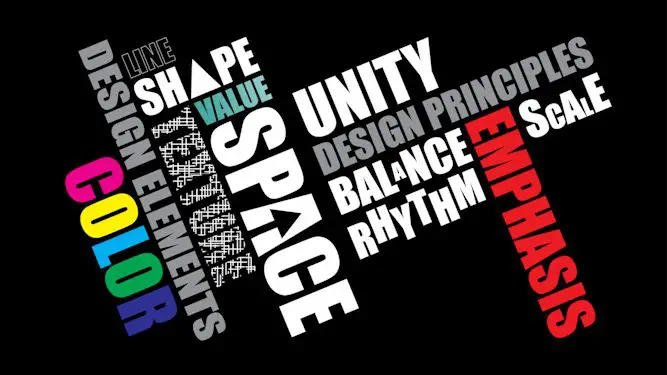Bluetooth is one of the most widely used technologies in the world. It has become an indispensable yet essential force in our digital lives, powering a wide range of devices from wireless headphones, fitness trackers, smart home devices, and even medical equipment. Chances are, you’re surrounded by Bluetooth-enabled gadgets right now. One has only to think of smartphones, laptops, earbuds, keyboards, and even some home appliances. Interestingly enough, by 2021, over 4.7 billion Bluetooth devices were being shipped worldwide.

Bluetooth technology enables wireless data transmission between devices using short-range radio waves. It operates on a master-slave (now more commonly referred to as central-peripheral) architecture, where one device, identified as the central, initiates and controls the communication, while the peripheral responds accordingly. During the initial connection, a pairing process is triggered, often involving user confirmation through a passkey or matching code to ensure security. Once paired, devices can seamlessly exchange data without the need for physical cables. Bluetooth is also engineered for low power consumption, making it ideal for wearables, wireless audio devices, and other battery-powered gadgets that require constant connectivity without rapid battery drain.
Unlike Wi-Fi and the internet, which typically require a central router, Bluetooth enables direct communication between devices (known as ‘peer-to-peer’ communication), making it ideal for short-range, low-power connections. Each Bluetooth device contains a tiny, built-in radio chip that enables it to send and receive data. When two Bluetooth devices are within range, they can “pair” through a simple authentication process, establishing a secure link for sharing information. Once paired, devices can reconnect automatically, enhancing user convenience.
The Origins of Bluetooth
As strange as it sounds, Bluetooth has been around since the 1990s, originally designed by engineers to unify different devices so they could communicate seamlessly and without messy cables by enabling short-range wireless data transmission. The first consumer Bluetooth device was a hands-free mobile headset released in 1999.
Especially today, in a world which demands seamless connectivity, high speed, and efficiency, that core idea still holds true – Bluetooth remains the go-to solution for connecting devices without the clutter and accompanying hassle. The core function of Bluetooth is to create a personal area network (PAN) using the unlicensed 2.4 GHz ISM (Industrial, Scientific, and Medical) frequency band, which connects devices like smartphones, tablets, headphones, speakers, smartwatches, and home automation systems. It can typically manage data transfers at ranges of up to 100 meters, depending on the device’s class.
What Is Bluetooth Low Energy (BLE)?
Bluetooth Low Energy (BLE) is a power-efficient variant of the classic Bluetooth technology, designed specifically for devices that need to consume less power and may need to run for long periods on a battery. BLE is designed for applications that don’t require handling a lot of data but do require good battery life.
Unlike Classic Bluetooth, which maintains a constant connection, BLE communicates in short bursts, which are sufficient to transfer the necessary data before going quiet again. This approach significantly reduces power consumption, making BLE ideal for applications such as smartwatches, wireless sensors, and health-monitoring devices that only need to send data intermittently.
Today, BLE has become the standard for most short-range wireless communication, especially in the world of smart devices and wearables.
What Is Bluetooth Classic?
Before smartwatches and wireless sensors were introduced, there was Bluetooth Classic. This is the original version of Bluetooth technology that laid the foundation for today’s wireless world.
Bluetooth Classic is designed to handle a lot of data, but it also consumes power quickly. Think about transmitting music from your phone to Bluetooth headphones. This is a conventional use case for Bluetooth Classic.
Bluetooth Classic is best known for supporting continuous, high-speed data transmission, which makes it ideal for applications like wireless headphones, car infotainment systems, game controllers, and file sharing between phones or computers. Unlike Bluetooth Low Energy (BLE), which sends data in quick bursts to save power, Bluetooth Classic maintains a steady connection, enabling smoother audio and more consistent communication.
While BLE has become the standard for battery-friendly devices, Bluetooth Classic still plays a major role in cases when high data throughput and real-time performance are needed.
Understanding BLE Roles: Peripheral vs Central
In the realm of Bluetooth Low Energy (BLE), devices have specific roles that dictate how they connect and communicate. The two primary roles are Peripheral and Central, and understanding their differences is essential to understanding BLE’s functionality. In a BLE connection, peripherals are typically the data providers or servers. Centrals, on the other hand, are typically data consumers or clients. They initiate connections and receive data from peripherals.
Peripheral devices are typically compact, low-power gadgets that are designed to transmit data. They can be thought of as the “servers” within the BLE ecosystem. These devices actively broadcast their availability to nearby Central devices while waiting for a connection. Common examples include heart rate monitors, fitness trackers, smart thermometers, and various sensor-driven devices that gather data for other systems to utilise. These devices are optimised to use as little energy as possible, which makes them ideal for applications where battery life is a top priority. Peripherals can spend most of their time in a low-power sleep state, preserving battery life, waking up only to advertise their availability or transmit data. This low power consumption allows them to operate for extended periods without frequent recharging or battery replacements, perfectly suited for wearable technology and other battery-dependent applications. Peripherals usually maintain a single active connection due to their resource constraints.
Central devices, in contrast, function as “clients” and tend to be more powerful, with fewer resource constraints. These devices actively scan for peripheral devices, initiate connections, and process the data they receive. They are typically more power-hungry as they continuously scan for peripherals and usually manage multiple connections.
A smartphone is a prime example of a central device; it can connect to multiple peripherals simultaneously, gathering and processing data from each one. The connection process begins with the central device, which seeks out and connects to a peripheral. Once a connection is established, the peripheral device ceases its advertising signals, and the central device stops its scanning activity, both actions serving to conserve energy. This efficient communication helps optimise the overall performance of the BLE network. Connection establishment in BLE is always initiated by the central device. The peripheral device advertises its presence, and the central device, upon detecting this presence, initiates the connection.
Bluetooth Classic vs. Bluetooth Low Energy (BLE): What’s the Difference?
Although both Bluetooth Classic and Bluetooth Low Energy (BLE) fall under the Bluetooth umbrella, they’re built for different purposes. The difference between Bluetooth Classic and Bluetooth Low Energy comes down to differences in power consumption and data throughput.
In brief, their differences are:
Bluetooth Classic
- Continuous, high-throughput data transmission
- Used for wireless audio (headphones, speakers), file transfers, car infotainment.
- Maintains a constant connection.
- Has high power consumption
Bluetooth Low Energy (BLE)
- Power-efficient, short burst data communication
- Used for fitness trackers, smartwatches, medical sensors, IoT devices
- Connects briefly, as needed.
- Has a much lower power consumption
Applications of Bluetooth Technology
Bluetooth technology is widely used across multiple industries and has become one of the most versatile wireless technologies in the world. It can be found everywhere – from your car and living room to your wrist and pocket. Some of the most prominent applications include:
- Audio Streaming: Bluetooth powers wireless audio, thus letting you connect headphones, earbuds, and speakers to your smartphone, tablet, or computer. It offers freedom from cables and an enhanced user experience.
- Wearable & Personal Devices: Smartwatches and fitness trackers rely on Bluetooth to monitor your activity and sync real-time data, such as steps, heart rate, and sleep patterns, with companion apps on your phone. Personal Devices: Fitness trackers, smartwatches, and health monitors use Bluetooth to synchronise data with smartphones and computers.
- Smart Home Automation: Home Automation: Smart bulbs, thermostats, locks, and appliances use Bluetooth for control and automation within the smart home ecosystem, helping you take control of your home from your smartphone. It enables secure, direct communication between devices, often without needing a Wi-Fi connection.
- Healthcare & Medical Monitoring: Bluetooth-enabled medical devices, such as glucose meters, blood pressure cuffs, and heart rate sensors, can transmit patient data to mobile apps or directly to healthcare providers, allowing for remote monitoring and better health management.
- Automotive Connectivity: Hands-free calling, music streaming, and diagnostics are standard features in modern vehicles, thanks to Bluetooth integration. Bluetooth hands-free systems allow drivers of most modern vehicles to connect their mobile phones for phone calls and audio playback without removing their hands from the wheel, and keeping their eyes on the road.
- Gaming: Controllers and peripherals utilise Bluetooth for rapid communication with consoles and PCs.
Conclusion
The strength of Bluetooth lies in its remarkable versatility, energy efficiency, and capacity to support various applications across multiple industries. Whether you’re listening to music, navigating with your smartwatch, or adjusting your thermostat via your smartphone, Bluetooth is the technology working seamlessly in the background to enable these effortless connections. What started in the 1990s as a basic protocol for replacing cables has transformed into a foundational element of modern wireless communication. In a world that increasingly relies on wireless connectivity, Bluetooth remains a cornerstone technology, offering convenience, flexibility, and the liberation from cables in every aspect of our lives, work, and leisure.

